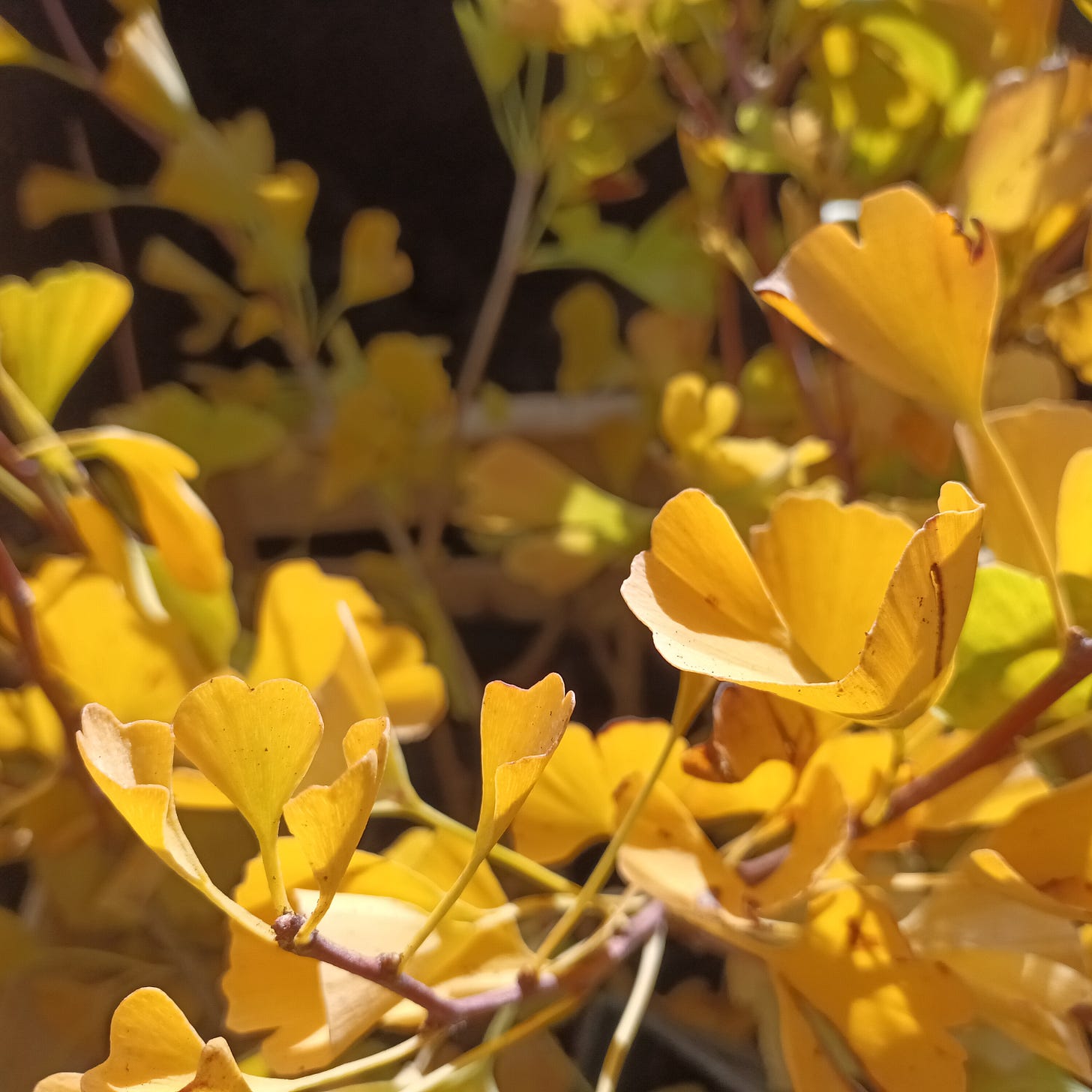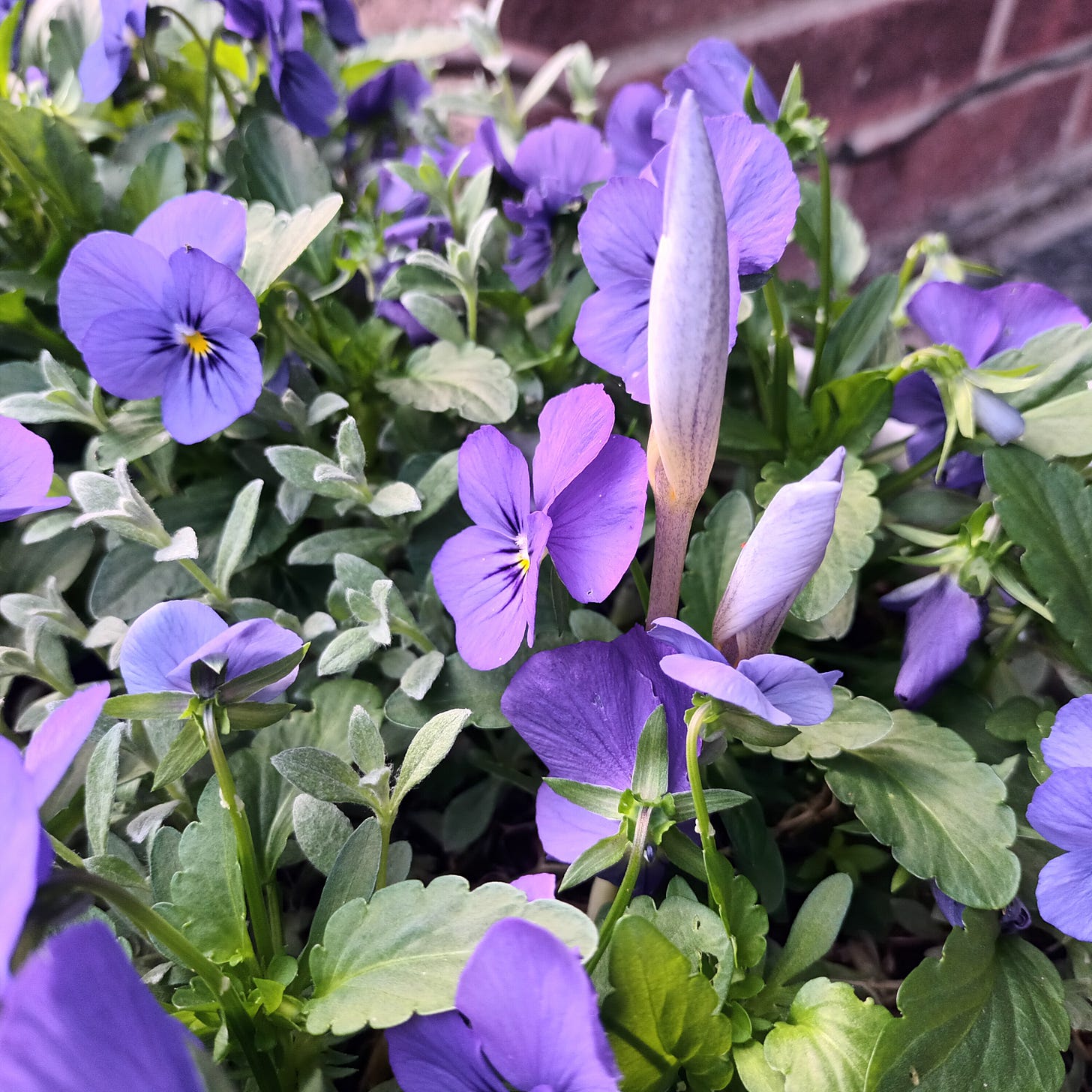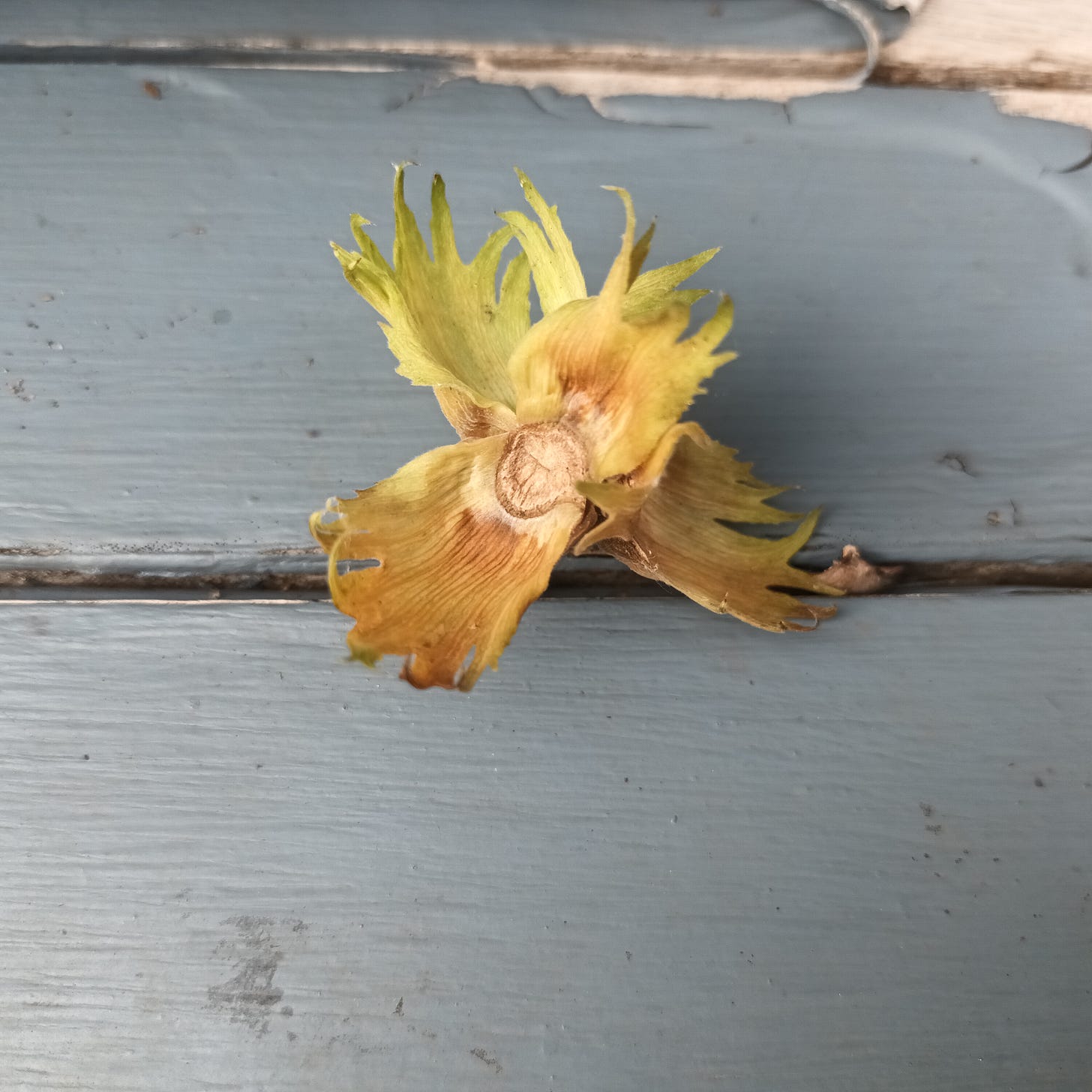What is too small for grief?
A post for pregnancy loss awareness day
A couple of weeks ago, I went to the plant nursery where I used to work, to buy daffodil bulbs for a client. It’s a beautiful place. As you go in there are benches full of violas in cobalt blue and smoke grey and intricate, veined sulphur yellow, with plum-purple backs. I have always loved those violas for the absolute, minute precision of that plum-purple veining, so tiny and so perfect. That day there were lovely, silver-leafed olive trees (and I remembered the day they were unloaded, with my daughter jumping in and out of the artic like a robin searching for worms). There were crates and crates of bulbs, fat with the promise of life.
That place is full of voices, for me. I know where I was standing when the clinic called to tell me how many eggs had fertilised. I know where I was where my colleague told me, matter-of-factly, about her own IVF embryos. (They couldn’t have kept them; they’d have fallen into mush.) And I know where I was where I was when they rang to say none of my embryos would make it. You’re upset about something not more than two cells! What if you’d had a miscarriage at six months?!
I thought very hard about writing a post – on pregnancy loss awareness day, no less – about such a very, very, very small loss, as four embryos that had to be destroyed. A day-five embryo is a tiny thing, only just visible to the naked eye. No bigger than a full stop. So small it’s barely there. Any kind of sadness you feel is out of proportion – something so tiny – and any emotion you might have must be inadmissible, pinned as it is to memories of what you planned, or futures you imagined.
But then, it seems to me that this cuts to the quick of what has gone so badly wrong for us, as a society. Infertility and pregnancy loss cause a kind of twisted or contorted hurt, what scholar Kenneth Doka called ‘disenfranchised grief’. What hurts is not only the loss itself, but the horrible presumption that this kind of grief is excessive and false and greedy, seeking after a resemblance to a larger, more legitimate grief. Yet what blows this whole cruel, coercive act of social policing wide open, is that all forms of grief for infertility and pregnancy loss are set against each other. A woman grieving a late-term miscarriage is told to be thankful it wasn’t a stillbirth. A woman who loses a baby at five weeks is told to be glad it was ‘just a chemical’ and not a ‘real miscarriage’. How dare anyone grieve for a loss that is not, after all, a ‘real’ baby – whatever a ‘real’ baby might be.
I find this both painful and painfully counter-intuitive, because grief is particular. It is not greedy, because no one wants to grieve for something that does not belong to them. You grieve for what is the precise, exact, tiny and specific shape of what you have lost, not for something else more socially acceptable, something closer to that ‘real’ baby.
We’re often given to believe that women today – women who have lived through the second half of the twentieth century and thereafter – live lives that are radically different from those of women throughout history. We’re told that women today are ‘snowflakes’ compared with our foremothers, that we’ve become sentimental, grieving over things far too tiny to be worth grieving – like wanting a baby, and not being able to have one. It has become the standard narrative that, because pregnancy can be identified from very early stages, and because we can visualise embryos and foetuses at early stages of development, we make emotional connections to potential babies earlier than women in the past. I have read pieces by doctors and midwives tinged with condescending judgment, as they point out this fact. If you think about it, just a few decades ago you wouldn’t even have known you were pregnant! There’s nothing to be sad about!
But it is a myth that women through history have not known – or not understood – themselves to be pregnant early on. And it is a myth that women were not upset – or that men have never been upset. I think of Robert Duckett, father of fourteen children, still grieving in 1534, for a baby born dead, still remembering how ‘he was lively in his mother’s womb’. I think of John Dee in 1581, anxiously tracking his wife’s precarious pregnancies, lost almost before they began. I think of the enormous weight of historical sources that tell us that people in history have always grieved for infertility and pregnancy loss, just as we do today. I truly believe we have invented this maladjusted, immature way of dismissing grief – this policing of what is ‘legitimate’ emotion around loss - as a recent thing. It is not historical. It is not necessary.
After I bought my daffodil bulbs, I sat in my car and I cried, and then I drove to my friend’s house. We watched her chickens pecking about under her new quince and medlar trees, where little wild cyclamen were naturalising in the grass. I sat at her kitchen table, where she had bowls of cobnuts – giant hazelnuts, still in their frilly green husks- and I turned them over and over in my fingers, as we talked. I thought of the fourteenth-century mystic, Julian of Norwich. Julian’s writings stem from a period of extreme bodily illness, during which she nearly died. In this crisis, Julian has a vision of:
a little thing, the size of a hazel nut in the palm of my hand, and it was as round as a ball. I looked at it with the eye of my understanding and thought, ‘What may this be?’ And it was answered, ‘It is all that is made’. I marvelled how it might endure, for I thought it might suddenly have fallen into nothing, for littleness. And I was answered in my understanding: ‘It endures, and ever shall, for God loves it’.
The language has a deep tactile reality, a sensory presence. We can almost feel that small object, rolled in the palm of the hand. I find this image poignant, for several reasons. I am acutely conscious of how the tiny beginnings of things threaten to ‘fall into nothing’; of how small the line is between what endures and what does not. But I also love that Julian is not talking about something enclosed and protected, the nut in its shell. She is talking, as Julia Bueno does in her book on miscarriage, about something on the brink of falling apart.
I am not quoting Julian to make a religious point, but because of the exactness with which she captures the fragility of those tiny things that threaten to fall into nothing. We are powerless to stop this falling, this loss. But, for most of human history, there has been enough love, and enough humane generosity, to recognise the grief that belongs to tiny things. We need - badly - to stop policing that grief; to start listening to the voices of the past, which knew how to offer comfort and how to recognise love for tiny things, far better that we do now.





A very moving piece. A little boy I knew (of course, I still know him, but now he's 30!) came to me in a panic. The wife of one of his teachers died. What should he say to him. I told him that he should say I am sorry for your loss. I also told him that my reasoning for that particular phrasing had all to do with not deciding what the person's loss is. Recognize the loss, I said, don't try to define it for someone else. Your grief is your own, and my responsibility as a decent human being is to acknowledge your grief, not decide how many ounces of grief you are permitted based on my assessment of the weight of your loss. And I am, sincerely sorry for your loss.
This is a truly lovely piece. Thank you.